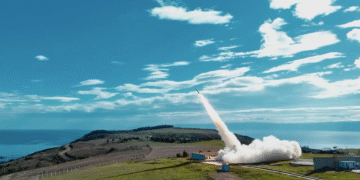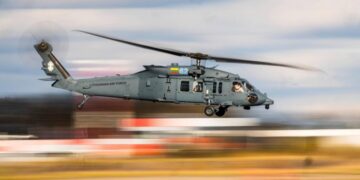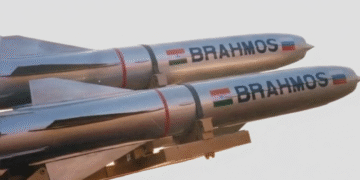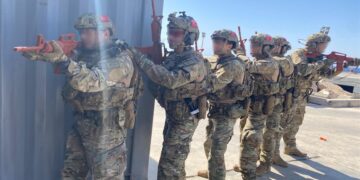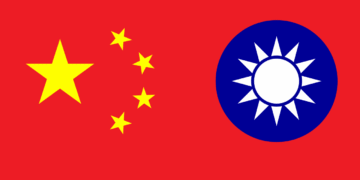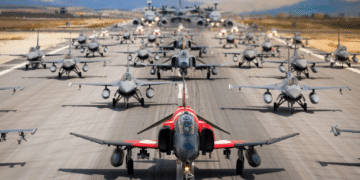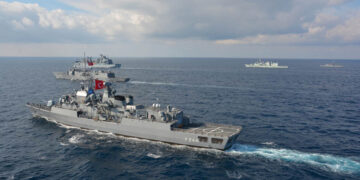The world is fixated on the wars in the Middle East and the Black Sea basins, and nearly 80 percent of news broadcasts deal with issues related to these regions. Only five years ago, there were around 60 to 70 active conflict zones on the planet, but today that number has nearly doubled. There are now between 100 and 120 active conflict areas where heavy weapons are being used, causing massive destruction every single day. Cities and towns — once living spaces for ordinary people — are being wiped off the map within hours, while the survivors are forced into long periods of exile.
Although it is almost impossible to follow every single development in this massive chaos, as C4Defence Magazine, we strive to write the truth in an original, independent, and impartial manner. Our priority is to focus on military and security matters that have the potential to affect our country in the short and medium term. In this context, we had brief meetings in Washington, D.C., in October. I will share with you in November the key topics discussed at the AUSA event.
Within this framework, it is expected that the center of gravity for mid-term security and military geopolitical maneuvers will shift to the Pacific Ocean. Peripheral conflicts are increasing in this vast geography where the sound of war drums is getting louder. I do not wish to list all of them here, but one in particular has drawn our attention: the developing conflict process between our friend and ally Pakistan and “Turkey-friendly” Afghanistan.
In fact, for those who are unfamiliar with the region, it may not be easy to grasp why Afghanistan is now involved in the long-standing, unresolved tension between Pakistan and India. What began as limited and localized bilateral frictions occasionally escalates into serious armed clashes — a clear indication that the region’s war scenarios are being rewritten.
All these developments unfold as part of the grand power games drawing in two nuclear-armed states, China, and Afghanistan. While most people are aware of the issues in the Kashmir region, the Afghanistan–Pakistan security dispute — ongoing since the founding of the Pakistani state — remains a particularly neglected crisis area.
The living areas, towns, and villages of the communities known as the “Pashtun tribes” were divided in two by the border agreement signed in 1893, known as the Durand Line. Some of these communities remained within Afghanistan, while the others are located today within what are now the borders of India.
The independent state of Pakistan, separated from British-ruled India, was founded on August 14, 1947, and Turkey was among the first countries to officially recognize it. Afghanistan, however, argued that the one-page “economically motivated” Durand Line agreement signed with the British had become invalid following the establishment of Pakistan.
Afghanistan’s official objection to the entire border line, as well as to the Balochistan and Gilgit-Baltistan regions, led to the emergence of a long-term crisis between the two countries.
During the ten-year Soviet occupation (1979–1989), the government in Kabul, relying on the security provided by the Red Army, claimed that Afghanistan’s borders extended as far as the Indus River, even submitting official demands to that effect. This situation prompted the Pakistani government to increase its military support for the Afghan mujahideen.
Pakistan, on the other hand, maintained that as a party state to the Durand Line agreements concluded under British India’s administration, it remained legally bound by them, and therefore, the validity of the borders was non-negotiable. During this period, numerous outpost raids and armed clashes occurred along the frontier.
In essence, this summarizes the situation. The fact that what was expected to remain a regional border dispute evolved into a global issue began with the Soviet military intervention. Seeking to balance Soviet presence in the region and resolve the dispute, the Pakistani government invited the United States to become a strategic partner in the area.
Pakistan’s territory subsequently became a base and logistical hub during the organization of the Taliban — initially under the banner of supporting the Afghan mujahideen with U.S. assistance. The Pakistani Intelligence Service (ISI) began organizing local Pashtun fighters against the Soviet Army and quickly rose to the position of a key player.
While all this was happening, the core border issue remained unresolved and even evolved into a form of irregular warfare. The ISI, supported by the U.S., played a crucial role extending even to the Taliban’s command hierarchy. After the Soviet Union’s hurried withdrawal from Afghanistan, the overthrow of the government established in 1992 was once again shaped by the relationship between Pakistan and the Taliban.
Even during the periods when Pakistan had the strongest influence over the Afghan government, the border dispute persisted. The U.S. Special Forces’ operation in Afghanistan, which resulted in the overthrow of the Taliban regime, brought the ISI and U.S. agencies into direct confrontation.
The new U.S.-backed Afghan government, led by Hamid Karzai, openly declared in all official meetings that he opposed the Durand Line and emphasized the need for its renegotiation. All subsequent U.S.-supported Afghan governments also rejected the legitimacy of the border.
In 2011, the Pakistani Army came under attack from Afghan forces along the border and had to defend its isolated frontier outposts by force. Towns and military control zones became targets of various “terrorist” attacks, resulting in significant losses.
In response, the Pakistan Air Force (PAF) began launching airstrikes on terrorist centers inside Afghan territory, and these operations are still ongoing. Most recently, after a major target in Kabul was struck, clashes reignited along the border and the two armies came face-to-face once again.
India’s Role
The United States’ unilateral decision to withdraw its military forces from Afghanistan — without any negotiation with the Afghan government or allied NATO states — paved the way for the Taliban’s return to Kabul. Seeking to free itself from the influence of the Pakistani ISI, the Taliban government made the unexpected move of involving India in this process.
Over the past eight years, India–Afghanistan relations have developed significantly. Throughout the period of U.S. and NATO presence in Afghanistan, intense logistical cooperation was maintained with India. The ISAF forces operating in Afghanistan often relied on Indian engineers for the maintenance of vehicles and electronic systems used by the Afghan army.
Personnel trained in the Indian army — which uses Soviet and Russian-made weapon systems — worked in infrastructure, mining, power plants, and all modern electronic systems, including those under the UN and Afghan military frameworks. The cooperation was so active that in 2016, the Mi-35 attack helicopters, retired from Indian service, were donated to the Afghan army.
After the chaotic withdrawal of Western forces, the Taliban government found itself isolated, with no other governments willing to cooperate. While both military and civilian needs persisted, investment had dwindled to almost nothing. The Afghan-Taliban army remained dependent in all aspects — a situation India was quick to turn to its advantage.
India’s rapid re-engagement brought with it a new strategic formation. This development created the possibility of encircling Pakistani territory, leading to the emergence of two critical fronts. Recently, a brief yet significant conventional engagement occurred between India and Pakistan, and soon after, the Afghan army attacked border outposts — a sequence that must be evaluated strategically.
The claim that these were merely responses to the Pakistan Air Force’s airstrikes against Tehrik-i-Taliban Pakistan (TTP) terrorist groups around Kabul is far from convincing.
Let us recall: the Kashmir clashes of May 2025 and India’s calls for revenge.
India’s reopening of its embassy in Kabul and the increase in economic agreements by late summer this year signify a deepening strategic partnership that adds new dimensions to regional military dynamics. The visit of Afghan Foreign Minister Amir Khan Muttaqi to India this October should be seen as a natural continuation of this process.
Meanwhile, the Pakistani government continues to construct a long border wall along the Durand Line.
The risk that this region could become a conflict zone among three nuclear-armed military powers constitutes a threat that concerns the entire world.


